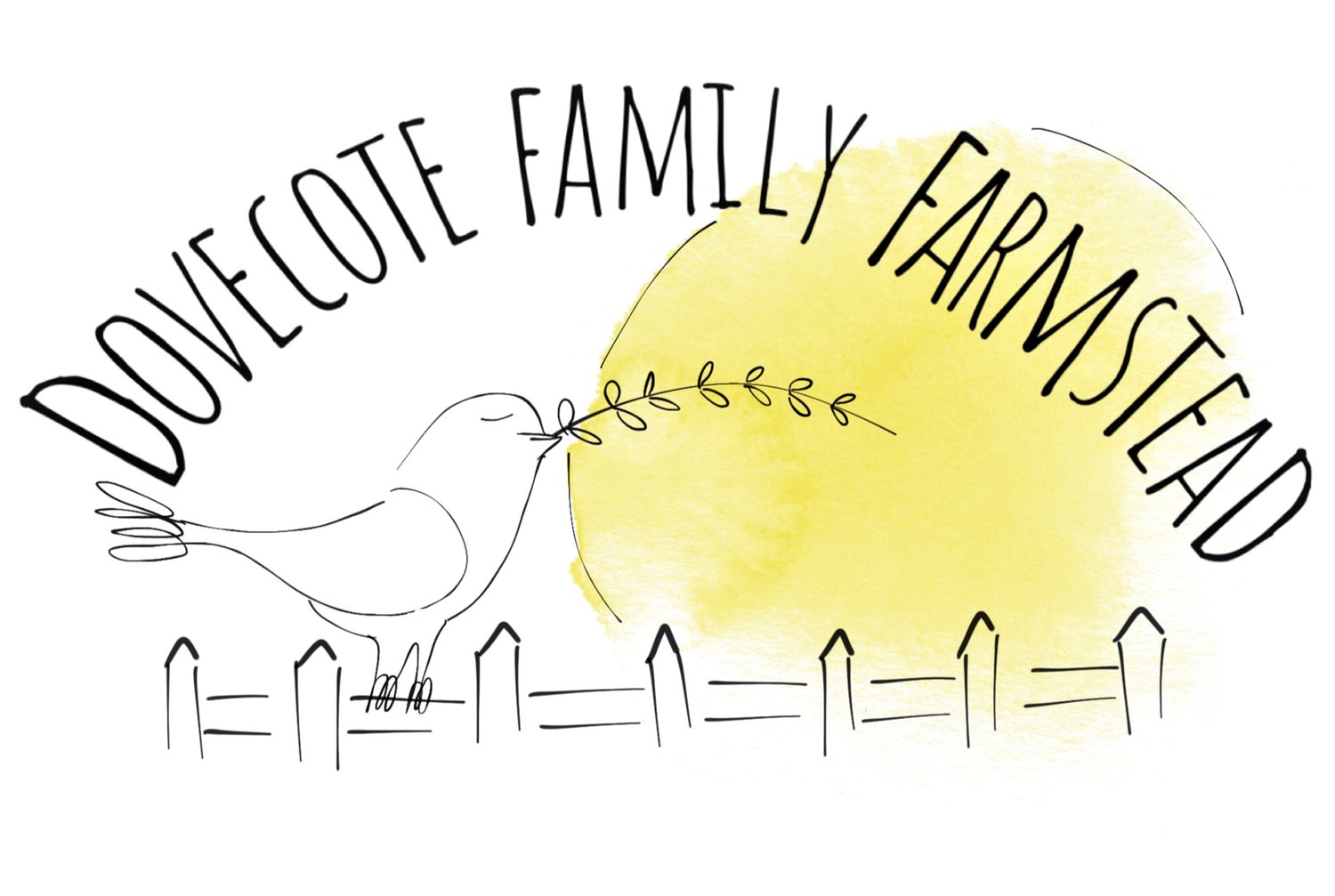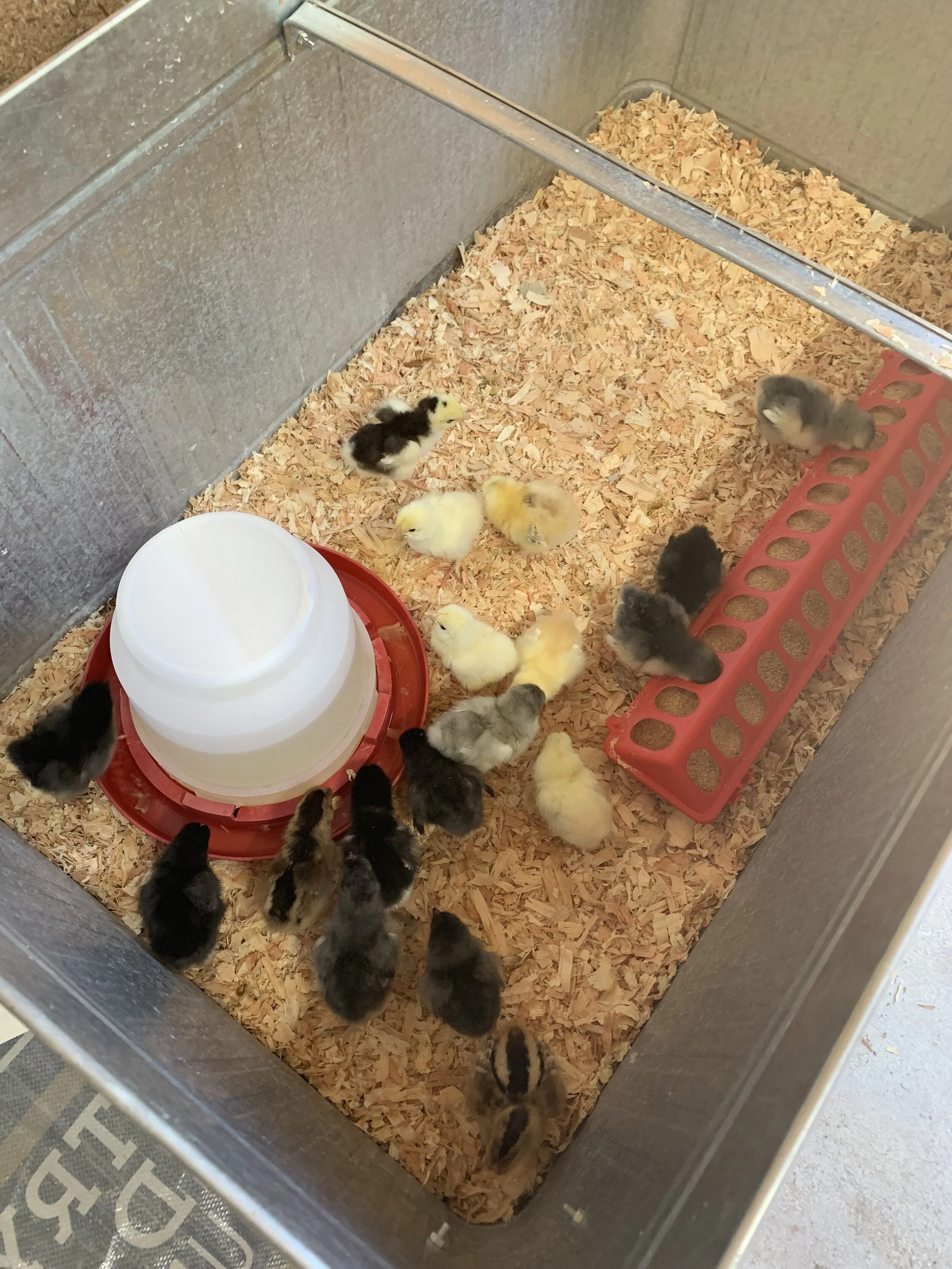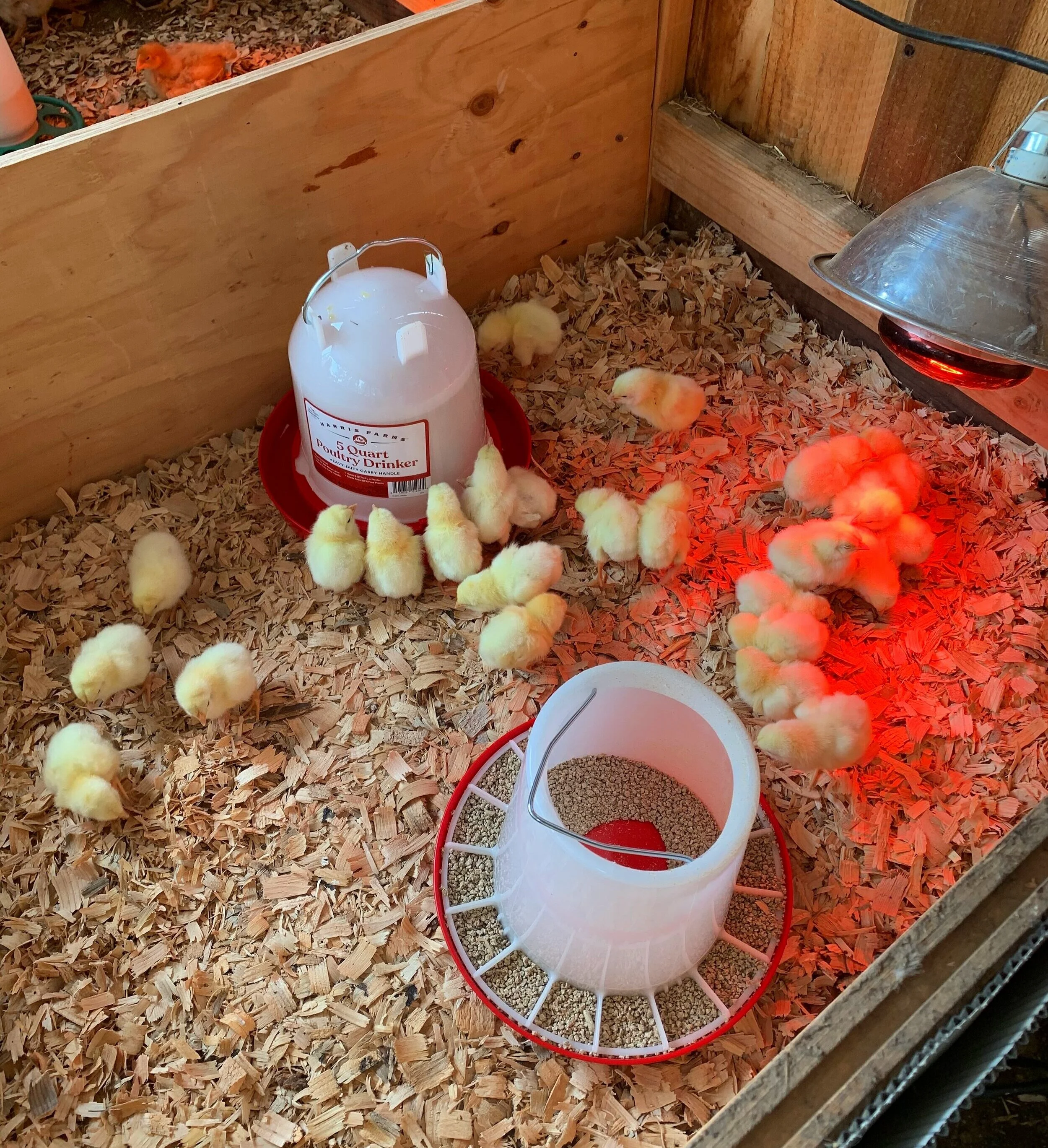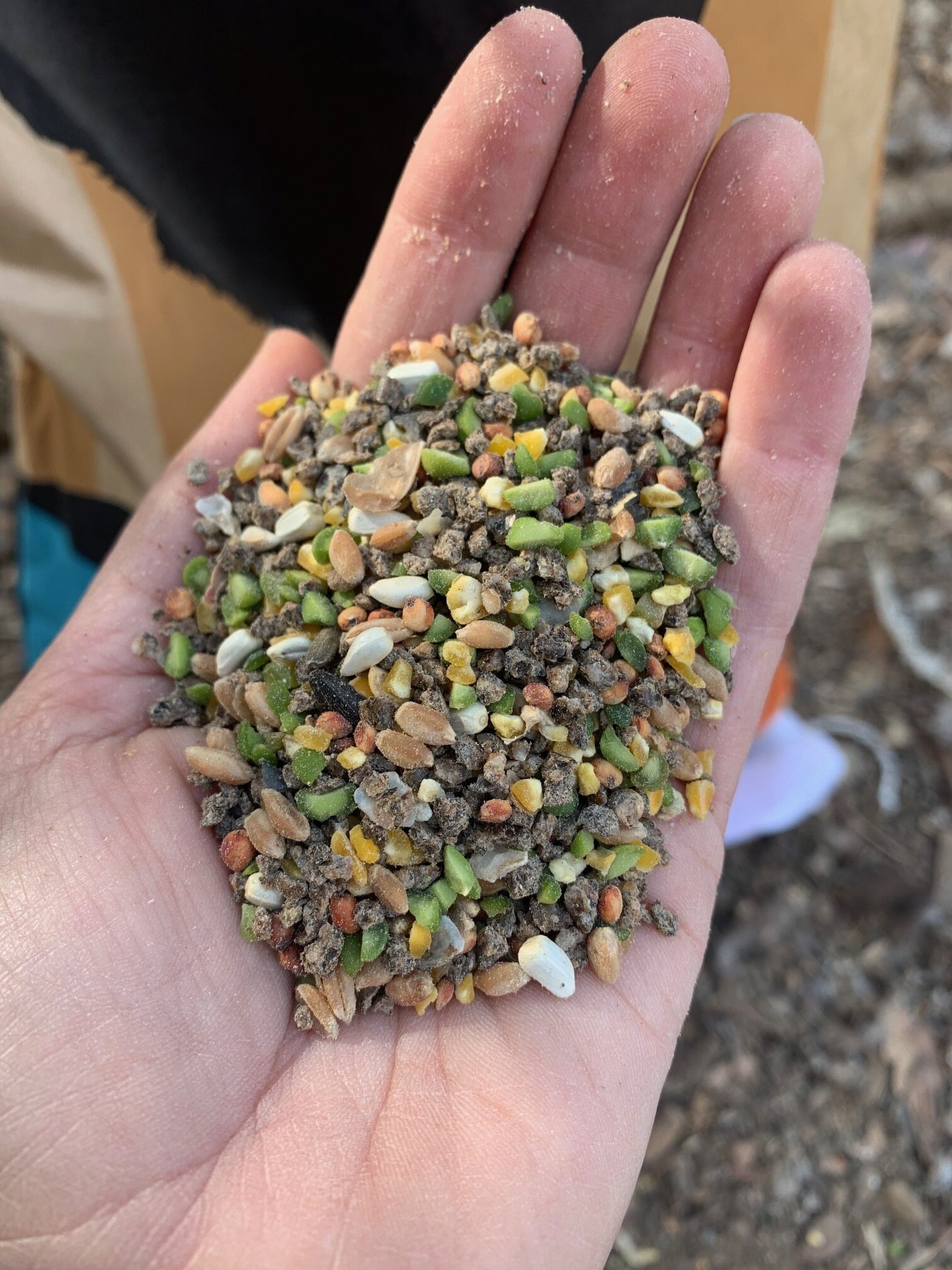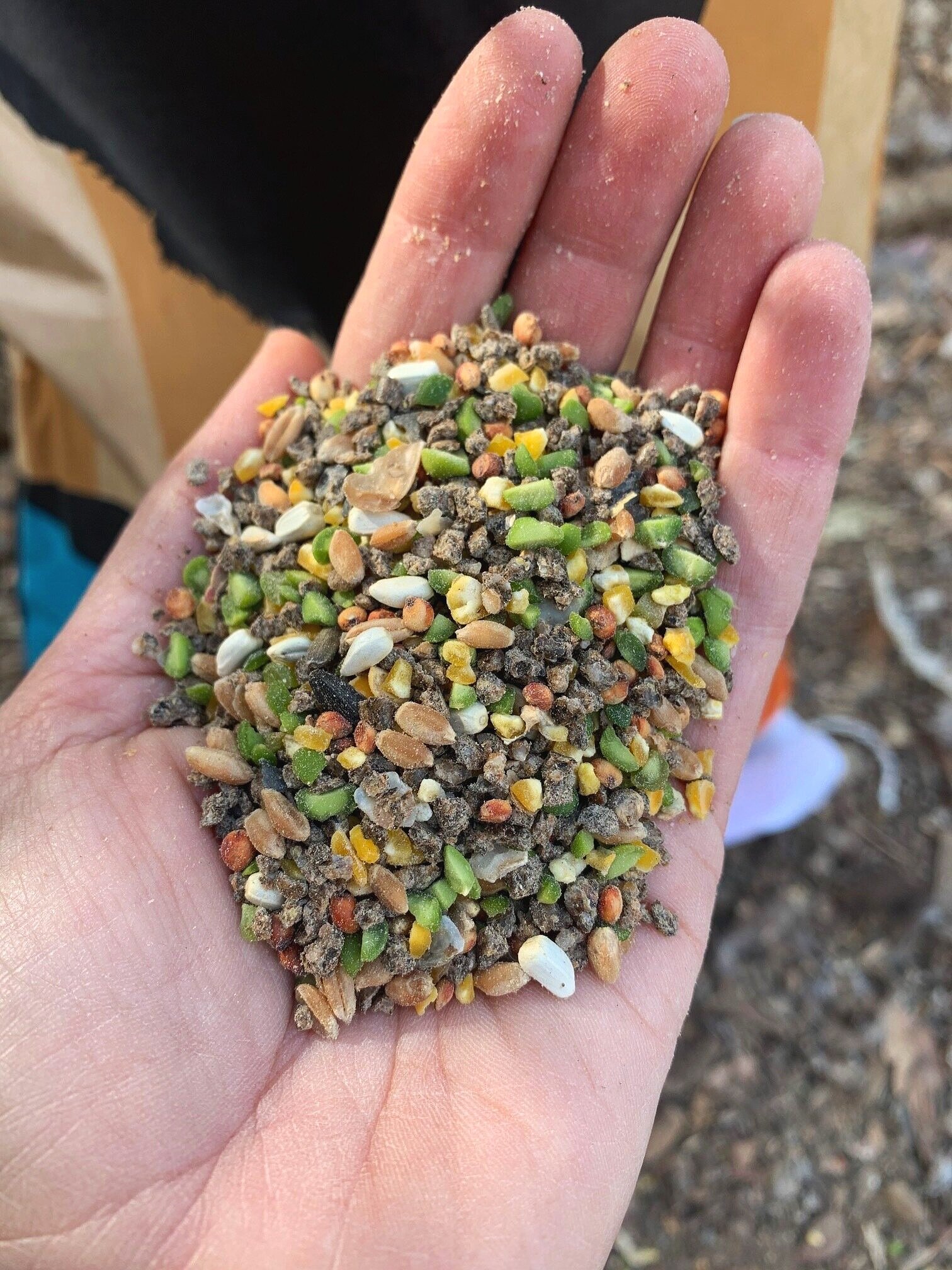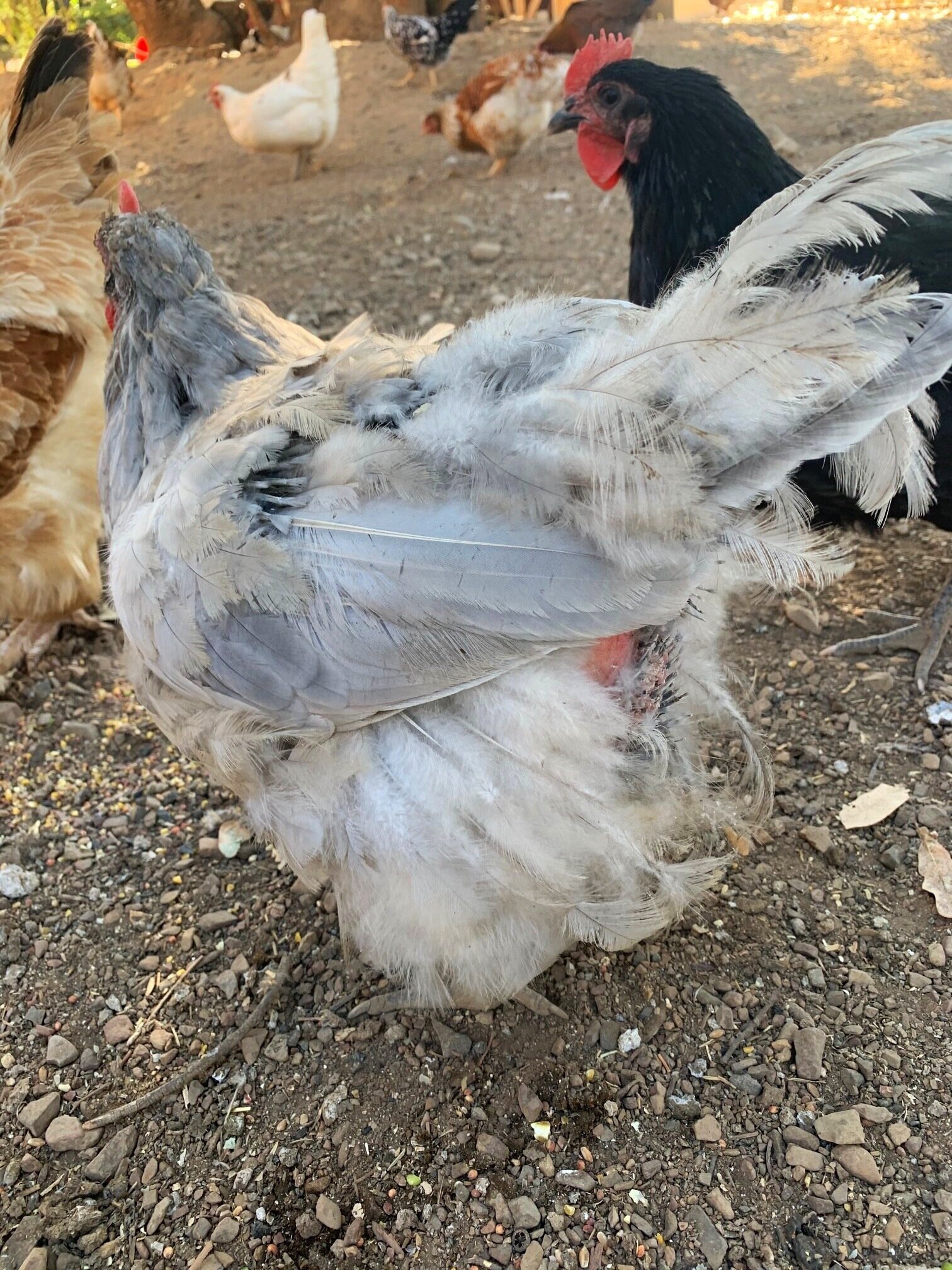What to consider when building your coop.
We have had a few chicken coops over the years. My first coop was absolutely amazing…and elaborate. I wanted to do all the things when I got started with chickens. It was lovely though! Since then (and now that we have around 150 chickens), I have chosen to focus more on practicality and what's really needed, while still adding some cute touches.
This was when we were building my first coop.
We have had a few chicken coops over the years. My first coop was absolutely amazing…and elaborate. I wanted to do all the things when I got started with chickens. It was lovely though! Since then (and now that we have around 150 chickens), I have chosen to focus more on practicality and what's really needed, while still adding some cute touches.
There are so many things to consider when deciding on what type of coop you want to build for your chickens. But to be straight to the point and to make it easy for you, these are the most important.
First you need to consider security. When the chickens are contained, they need to be safe from any potential predators, including (hopefully not) other pets at home such as a dog etc.
Space needs. Each chicken ideally should have 4 sq ft per bird when they are contained, unless they are only locked up at night and able to free range a larger area during the day.
Accessibility. You are going to need to be able to get in and clean the coop adequately and preferably easily. So, consider if you can get in with a shovel, rake etc. and move around without banging your head, shovel or whatever else.
Ventilation. Air quality is important for your chicken's respiratory health, so you want to have your coop properly ventilated. This means a cross breeze at all times if possible, while still being able to shelter your birds during harsher winter winds, rain or snow. You want a breeze to flow through but block the harsher winds, rains etc.
Placement of the nesting boxes and roosting bars. There are a lot of different designs, but mostly focus on making the nesting boxes a bit more private, out of the way and make sure each roosting bar is around 18inches from each other. The chickens will have a tough time moving around each other and settling in easily if it's too tight or the bars leave the chickens stacked on top of each other.
Environment. Do you live in a warmer climate with mild winters? Keep the hotter months in mind when designing your coop, meaning shade when it’s hot out, lots of ventilation and wind/rain protection in Winter. If you live in the opposite, then consider only enough ventilation to keep dampness under control and air quality healthy but build it enclosed in a way that will trap warmth more efficiently and keep the harsh Winter cold out.
Location. Lastly, you want to consider where you will build the coop. Chickens (like many farm animals) attract flies, so you may not want it too near your house. You also don't want it too far away so feeding and chores are easy to accomplish and also allows you to hear if something happens in the coop, such as a predator etc.
Like I said, there is a lot to consider when building your coop, but with a little forethought and planning, you can set yourself up for success from the beginning and have fun along the way!
Baby Chicks 101
Spring will soon be here and for many of us, you know what that means…it’s baby chick Season!!! Having baby chicks for the first time is SO MUCH FUN!!! Well, it’s always fun even if it’s not your first time. My girls and I still get excited over them every time a new baby is hatched or we pick up a box from the post office! Sigh…so sweet. Now, if you're reading this before getting chicks, great job!
This time I used a metal planter bed as a brooder.
Spring will soon be here and for many of us, you know what that means…it’s baby chick Season!!! Having baby chicks for the first time is SO MUCH FUN!!! Well, it’s always fun even if it’s not your first time. My girls and I still get excited over them every time a new baby is hatched or we pick up a box from the post office! Sigh…so sweet. Now, if you're reading this before getting chicks, great job! You'll know ahead of time what's needed to get you set up before you're at the feed store buying them, haha!
Here's what you'll need to get started:
A brooder box. This can be a large Rubbermaid tub or something similar. You could also set up something more permanent in your coop or designated chicken area if you plan to keep raising birds. That’s what we ended up doing since we have a steady supply from raising meat birds.
Pine shavings or straw
A water container
A feed container
A heat lamp or light bulb for a consistent heat source
This one is optional, but I also add about 1tbsp of apple cider vinegar to their water to help prevent pasty butt, which happens sometimes from the stress of the transition home.
This is our built-in brooder that is in one of our chicken coops now.
Baby chicks need to be kept at around 90-95 degrees, 24 hours a day for their first week of life, slowly reducing the heat about 5 degrees each week until they are feathered and able to maintain their own body heat. You can reduce the heat by moving the light further away each week. You'll know your chicks are the right temp by observing their behavior. They are too cold if they are huddling together in a ball under the warmest part of their area. They are too warm if they are trying to get as far away as possible from the heat source and their mouths are open gaping. They are just right if they are dispersed around the brooder, some eating, some drinking, some face down in the shavings sleeping, or all spaced out sleeping happily.
Raising baby chicks is really simple and a lot of fun. Consistent care each day, making sure they always have access to fresh food and clean water at all times goes a long way and should help you to avoid many issues. On occasion, sad things do happen though, despite our best efforts…baby chicks are super fragile little creatures. But don't let that discourage you, the payoff is well worth it and the enjoyment you'll experience from watching them grow and eventually going out and collecting their beautiful, fresh eggs, is a gift that keeps on giving.
Enjoy!
Adding light to your coop in Winter
As the days grow shorter and the weather cools, you may have noticed a decline in egg production. This is completely normal and happens each Fall and in to the Winter months. You may be wondering if it is possible to keep your chickens laying through the Winter and the answer is yes, you can. All you need to do is add light to their coop for a few hours a day as the sun begins to set. But just because it's possible, doesn't necessarily mean it's the best choice. Let me tell you why.
As the days grow shorter and the weather cools, you may have noticed a decline in egg production. This is completely normal and happens each Fall and in to the Winter months. You may be wondering if it is possible to keep your chickens laying through the Winter and the answer is yes, you can. All you need to do is add light to their coop for a few hours a day as the sun begins to set. But just because it's possible, doesn't necessarily mean it's the best choice. Let me tell you why.
Chickens, like humans are born with all the eggs in their ovaries that they are capable of producing in their lifetime. So, once those eggs are gone, the chicken is done producing eggs and you'll need to decide if it's worth keeping them around for the remainder of their years without giving you eggs for your effort. It may sound mean, but it's a reality for a lot of chicken keepers.
Also, laying eggs consistently requires a lot of energy from your hens. Usually your hens will go through their Fall molt and then either resume minimal egg production through Winter or stop laying altogether for a few months, usually until February.
I'm a proponent for natural cycles in life that allow our bodies to rest. This is why I choose not to add light to my coops in winter. I also prefer to prolong their laying years. It's a lengthy process to raise baby chicks up to laying hens and I would rather give them their natural rest cycle and enjoy their eggs for as long as possible.
So then, what other options do you have to keep your egg supply up, even throughout the winter? My suggestion is to create a mixed flock, adding birds that are winter hardy and producers even in the colder Winter months. I added some specific breeds to my flock recently that continue to lay even with the shorter days and colder weather. Here are my suggestions on which breeds to consider.
Rhode Island Reds
Wyandotte's
Delaware's
Faverolles' (my favorite!)
Sussex
New Hampshire
Whether or not you decide to add light to your coop or not, now you have some options to aid in making that decision. Keeping chickens for eggs is a practical decision for many and creating a mixed flock is a great way to meet your egg needs as well as supporting the natural cycles your chicken's body needs.
Growing fodder for your chickens
First of all, let's talk about what fodder is. Fodder is basically just taking some sort of seed, such as hard wheat, whole oats, or barley and sprouting it so it becomes a grass for your animals. This can be done very simply, but the benefits are exponential.
This is an example of the finished product.
First of all, let's talk about what fodder is. Fodder is basically just taking some sort of seed, such as hard wheat, whole oats, or barley and sprouting it so it becomes a grass for your animals. This can be done very simply, but the benefits are exponential. Some of the reasons people grow fodder are, it's a nutrient dense super food (think wheat grass that we get at the local juice bar), creates a food source that maybe wouldn’t be available year round, as well as cutting down on feed costs etc. I buy a 50lb. Bag of non-GMO wheat seed for around $15, which in turn results in about 300lbs of fodder. Compare that to what you pay for 300lbs of feed! I do it for all of these reasons, but also just because my birds really love it. It's hilarious to see 100+ chickens come running when I lay the fodder out, then watch them all scratch, peck and talk with their beaks full. There's a lot of chatter around feeding time with these ladies!
If you're interested in growing fodder yourself, here's what you'll need:
Fodder trays like this: (or something similar) https://amzn.to/34Ksm8G
Seed of choice. You can usually pick a 50lb bag of seed up at your local feed store. I use Bar Ale for seed and they offer it non-GMO, I grow it organically.
Once you've got your supplies handy, here's what you do:
Take the seed you'd like to sprout and put it in a bucket with water. You're going to let it soak overnight.
The next morning/day, take the seeds and pour them into your sprouting trays, filling them to about a 1/2 in depth.
Place the trays in a bright area where they will get sunlight and remain undisturbed by any curious chickens. This could be next to a window somewhere, or a greenhouse etc.
Water the trays every morning and evening until they grow to about 3-4 inches tall. You may need to water yours 3 times a day if you live in a dry, hot climate or only once a day if you live somewhere more temperate.
Once the grass has grown to the desired height, you can just peel the grass up in sheets and feed the entire thing to your chickens. That's it, you’re done. Easy peasy!
Once you've got your process down, it's easy to stagger your fodder growing so you have a few trays ready every few days, or weekly etc. When I'm really on top of things (and its not 5000+ degrees outside!), I have fodder ready for my ladies (and gentleroos) every 4-5 days. The only time of year I don't grow fodder is when we have fresh grasses growing in late winter/early spring…or when my greenhouse is 130+ degrees in the middle of Summer. Gross. Then it's nearly impossible for anything to grow, despite watering it multiple times a day.
Anyways, there you have it. You are all set to grow fodder on your own. Your clucks will thank you!
What to feed your chickens
What chickens eat largely depends on how old they are and whether you are raising them organically or not. There is a lot of information out there on what to feed your chickens, but I'm just going to share what I feed my chickens and why I chose to do that.
This is the feed we use and some scratch that my clucks love.
What chickens eat largely depends on how old they are and whether you are raising them organically or not. There is a lot of information out there on what to feed your chickens, but I'm just going to share what I feed my chickens and why I chose to do that. I am not affiliated with any of these companies, just have used and been happy with their products.
When you first get your baby chicks, they will need what is called a starter feed. This feed is going to have a higher percentage of protein and can be either medicated or non-medicated. What's the difference you ask? Well, medicated feed includes one added ingredient that prevents your baby chicks from contracting a parasitic organism called coccidiosis, allowing them to build a natural immunity to it for later on in life. If you are raising your babies where they have ANY access to the outdoors where either wild birds are, or chickens have been raised previously, it is nearly a guarantee that coccidiosis is present in their environment and your chicks will be exposed to it. In that case, medicated starter would be best. If you are raising them indoors with no exposure, you can do non-medicated but they will still be exposed once moved outdoors and you may run the risk of them getting sick later and needing antibiotics to treat it. Personally, I start all my laying birds on medicated feed then switch them to organic after. The medicated feed only has a 2 week withdraw period so it's no longer in their system by the time they start laying. (For our meat birds, I feed them organic from the start and have them sprayed for coccidiosis at the hatchery before they arrive.) Starter feed needs to be fed to your babies for 6-8 weeks.
*Also, another bit of information worth noting is where you get your baby chicks from. If ordering directly from a hatchery, you can have them sprayed with medication that does the same thing as feeding medicated feed and then give them organic/non-medicated feed once you get them home. If you get your chicks from the local feed store, they will NOT be medicated or vaccinated and you will need to decide what you'll do.
After the first 6-8 weeks, you want to transition the birds to a grower feed. This is where I transition my birds to organic/non-GMO feed. I have also chosen, for the most part, to use corn and soy free feeds. I add corn on occasion in the colder months of Fall and Winter only, since it has a warming effect on the birds. I also always make sure the corn I use is non-GMO. I try to avoid soy altogether. If you're curious which brands I use, I have chosen both Bar Ale and Modesto Milling for our feeds. Keep them on this feed from 8 weeks until they are between 16-20 weeks old. (Fun fact for you: Juvenile chickens are considered pullets if they are a female under 1 year old and cockerels for a male under a year. After that they are a hen and a rooster.)
This is what I have started giving my birds this Fall and will continue through the Winter. It’s Bar Ale’s Ultimate Layer Pack. Beautiful feed loaded with goodies for your birds!
Lastly, you will put your chickens on a layer feed. You can choose a pellet or crumble, whatever you or your birds prefer. This feed will help support your hens as they begin to lay eggs and will provide the correct ratio of vitamins, minerals, fats, protein etc. that they need. This is the feed they will stay on for the remainder of their lives.
There are also many other things you can offer your chickens once they are pullets and older. These include leftover dinner scraps, anything you'd put in your compost, growing fodder for them, any grasses, bugs and other goodies they find while free-ranging, garden produce that was inedible for you etc. It really is fun and helpful how much these gals (and guys) can eat, which means less waste overall. A win-win! I'll write more about growing fodder for chickens in another post soon. So if you're interested, keep an eye out for it. Also, you may want to consider giving your girls scratch. This is usually a whole grain mix, cracked corn or something along those lines. I usually stick to mostly whole grains and if I do add cracked corn, I choose non-GMO and do so only in the cooler months since it has a warming effect on the birds.
I hope this information was helpful for you. Please feel free to add comments or ask questions. I’d love to hear from you!
Blessings,
Tove
What about ducks? A mixed flock.
So, lets talk about ducks. The first time we got ducks, (yes, we got more and then some more and then…some hatched thanks to a very persistent mama duck) we picked up 6 mixed ducks, all straight run from our local Tractor Supply. Oh boy, we fell in love immediately! If there is anything on this earth cuter than baby chicks, it's baby ducklings!
Ok, so we've talked about chickens for a bit, but what about some of the other options you have for backyard flock? After we moved to this property, we decided to add a few ducks to our flock (and also ended up with a few turkeys…on accident but that's a story for another time.)
So, lets talk about ducks. The first time we got ducks, (yes, we got more and then some more and then…some hatched thanks to a very persistent mama duck) we picked up 6 mixed ducks, all straight run from our local Tractor Supply. Oh boy, we fell in love immediately! If there is anything on this earth cuter than baby chicks, it's baby ducklings! They do all the same things that adult ducks do, swimming, diving under the water, shaking their little tail feathers but in a miniature version. It's ADORABLE! But, let's move beyond the cuteness and talk practicality.
To start, ducks tend to be much more hearty than chickens. Of all the ducks we have raised, we have been able to raise them without incident. They also grow rapidly, much faster than chickens do, which means you can have them out of their brooder and into their designated area much sooner. They also can be great layers! Our ducks lay huge eggs, bigger than a jumbo chicken egg. Duck eggs are also excellent for baking and have a richer flavor than chicken eggs when cooked. This may freak a few of you out, but they can easily be mixed with chicken eggs until you get over it, ha! That's what we did and now my husband, daughter and dad prefer them over chicken eggs. Who knew?
Ducks are also fun! They can be trained from the start to follow you around. My girls loved having a trail of ducklings running after them around the property. They also are quite talkative. When it's feeding time, our ducks are happy to announce their pleasure over it to anyone within ear shot. Our rear neighbors have a running joke that their kids know it's ok to come play on the weekend once they hear the ducks in the morning!
Lastly, ducks can be raised right alongside your chickens. They don’t have any special requirements, such as a pond etc. only access to enough water to dip their heads under so water can roll down their back. They can even share the same feed with your chickens (just buy a mixed flock feed) and can also be shut up in the coop with your chickens at night.
There are many more reasons to consider adding ducks to your flock, but I think now you at least have some food for thought.
Enjoy!
Molting…why your chickens have bald patches.
If you're a seasoned chicken keeper, this isn't going to be news to you. But, if you are newer to it and haven't had chickens for more than a year, then this will be some good information for you.
This is an example of a soft molt. Poor girl looks a little rough…
If you're a seasoned chicken keeper, this isn't going to be news to you. But, if you are newer to it and haven't had chickens for much longer than a year, then this will be some good information for you.
Most people get their chickens in the Spring and raise them up through the Summer, usually having eggs before the Fall. The first year of your chicken's life is all about healthy growth and development, and of course for eggs! Then your daily chicken routine seems to fall in to a rhythm and flows accordingly. It's a beautiful thing. Once your chickens have reached their second Fall however, there's another addition to that flow. Molting Season.
(Bonnie is having a rougher go. I think she was a little miffed about having her picture taken in her current condition, I had to bribe her with mealworms for her to stay still for this picture!)
What does it mean when your chicken is molting? In simple terms, your chicken loses some, or most of their feathers and grows fresh, new ones. How many they lose can very from chicken to chicken and some may only lose a few around their neck, vent or back (a soft molt) or they may be darn near bald (a hard molt). Either way, it's completely normal and will become an annual thing from then on. It can look a little crazy in the yard with feathers all over, but shouldn’t last more than 2-6 weeks, depending on how hard their molt is. Also, if you have roosters, they typically never molt as severely as a hen will. I’m not sure why exactly, but they don’t. (the boys always get off easy, don’t they??)
These are great options to supplement and support your flock during their molt.
During the time your chickens are molting, it's important to supplement their diet with additional protein. You can do so by adding mealworms, supplement with scratch, or by buying a feed with a higher protein ratio just while they are molting. (You don’t want to keep them on a high protein feed when they are not molting because it's not good for their kidney's). I also like to grow wheatgrass or oat grass fodder for my birds along with adding mealworms. They seem to think it's pretty great, so I roll with it! (If you want to know how to grow fodder, keep an eye out for my post on it.) I also add kelp meal to their food during molting season and during any other time my birds seem to be under additional stress. I add about 2 cups of kelp meal per 40lb bag of feed.
Another thing to note during molting season is that your ladies will likely stop laying eggs during this time. It takes a lot of protein to grow feathers, so the chickens’ body will slow or stop egg production altogether in order to concentrate on regrowth. Once their feathers are regrown, egg production will resume until it slows again during the winter months.
This is from our rooster, not from molting.
Another little side note. There are other reasons your chicken could be losing feathers. Sometimes they will get a bald patch on their back from the rooster, depending on how attentive he is. Some guys are just rough on those poor ladies. Other reasons could be from the hen herself, plucking feathers out that were either damaged or dirty etc. They can also lose feathers from parasite issues that have become severe. These are much less common though if you’re taking adequate care of your birds. A quick, clear indicator if it's molting and not something else, is that molting nearly always happens in the Fall and will affect multiple birds from your flock to one degree or another.
Well, I hope you feel a little more informed of what's happening to your flock, or will be ready for when it does.
P.S. If you're wondering what to do with all those feathers in your yard and you've got a compost pile, throw them in there. It may take a while to break down, but they are completely compostable.
